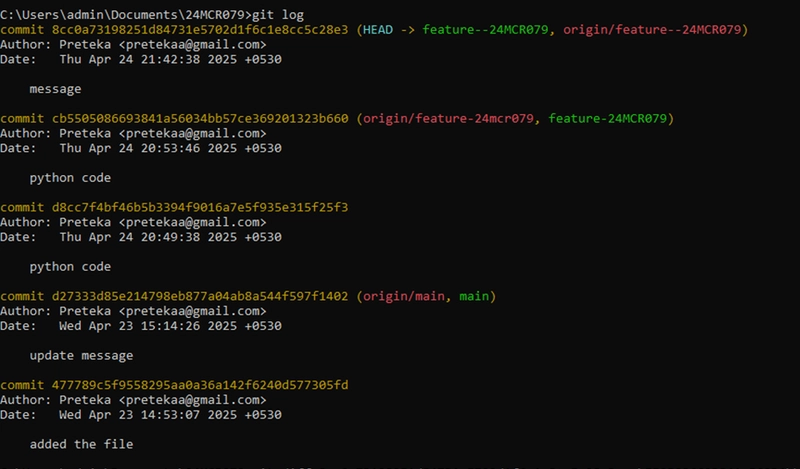How Major Tech Companies Use Abstraction and When You Should Too
Introduction Abstraction is a powerful concept in software development that allows developers to manage complexity by hiding unnecessary details and exposing only what is essential. It's a cornerstone of Object-Oriented Programming (OOP) and is used extensively by major tech companies to build scalable, maintainable, and efficient software systems. In this article, we'll explore how tech giants like Google, Facebook, and Amazon leverage abstraction in their software architecture and provide practical advice on when and how you should use it in your own projects. Abstraction in Action: How Big Tech Companies Use It Google: Managing Complexity in Large-Scale Systems Google's software systems are vast and complex, with countless interconnected components and services. Abstraction is key to managing this complexity. For example, Google's internal APIs are designed with abstraction in mind, allowing developers to interact with services without needing to understand the underlying implementation. By abstracting complex functionality behind simple interfaces, Google enables its engineers to focus on solving specific problems without getting bogged down by the intricacies of other systems. This approach not only improves developer productivity but also makes the overall system more resilient to change. If the implementation of a service needs to change, the abstraction layer ensures that other parts of the system remain unaffected. Facebook: Simplifying User Interface Development At Facebook, abstraction is crucial for maintaining a consistent and responsive user interface across multiple platforms. Facebook's React framework is a prime example of abstraction in action. React abstracts the complexity of DOM manipulation and state management, allowing developers to focus on building components and user interfaces without worrying about the underlying implementation details. This abstraction makes it easier for developers to create dynamic and interactive UIs while ensuring that the application remains performant and easy to maintain. By abstracting the complexities of UI development, Facebook can iterate quickly and deliver a consistent user experience across its web and mobile applications. Amazon: Abstracting Cloud Infrastructure Amazon Web Services (AWS) is one of the most widely used cloud platforms in the world, and abstraction is at the heart of its design. AWS abstracts the complexities of managing servers, storage, and networking, providing developers with simple APIs to interact with cloud resources. For example, Amazon S3 abstracts the details of data storage, replication, and retrieval, allowing developers to focus on building applications rather than managing infrastructure. This level of abstraction enables companies of all sizes to leverage cloud computing without needing deep expertise in cloud infrastructure. When Should You Use Abstraction? Simplifying Complex Systems If you're working on a project with multiple components or services, abstraction can help you manage complexity by hiding unnecessary details. By creating simple interfaces for complex systems, you make it easier for yourself and others to work with the codebase. For example, if you're building a microservices architecture, you can abstract each service behind an API, allowing other services to interact with it without needing to understand its internal workings. This approach not only simplifies development but also makes the system more modular and easier to maintain. Protecting Against Change One of the key benefits of abstraction is that it allows you to change the underlying implementation without affecting other parts of the system. This is particularly important in large projects where multiple teams are working on different parts of the codebase. By defining clear abstractions, you create a contract between different components of the system. As long as the contract (the public interface) remains the same, you can update or refactor the internal implementation without causing issues in other parts of the system. Designing Reusable Code Abstraction is also crucial when designing reusable components or libraries. By hiding the complexity of the implementation and exposing a simple, consistent API, you make it easier for others to use your code in different contexts. For instance, if you're building a library for data processing, you can abstract the complex algorithms behind simple function calls. This way, users of your library don't need to understand the intricacies of the algorithms—they just call the functions they need and get the desired results. Conclusion Abstraction is a fundamental concept that helps manage complexity, protect against change, and design reusable code. Major tech companies like Google, Facebook, and Amazon rely on abstraction to build and maintain their large-scale software systems.

Introduction
Abstraction is a powerful concept in software development that allows developers to manage complexity by hiding unnecessary details and exposing only what is essential. It's a cornerstone of Object-Oriented Programming (OOP) and is used extensively by major tech companies to build scalable, maintainable, and efficient software systems. In this article, we'll explore how tech giants like Google, Facebook, and Amazon leverage abstraction in their software architecture and provide practical advice on when and how you should use it in your own projects.
Abstraction in Action: How Big Tech Companies Use It
Google: Managing Complexity in Large-Scale Systems
Google's software systems are vast and complex, with countless interconnected components and services. Abstraction is key to managing this complexity. For example, Google's internal APIs are designed with abstraction in mind, allowing developers to interact with services without needing to understand the underlying implementation.
By abstracting complex functionality behind simple interfaces, Google enables its engineers to focus on solving specific problems without getting bogged down by the intricacies of other systems. This approach not only improves developer productivity but also makes the overall system more resilient to change. If the implementation of a service needs to change, the abstraction layer ensures that other parts of the system remain unaffected.
Facebook: Simplifying User Interface Development
At Facebook, abstraction is crucial for maintaining a consistent and responsive user interface across multiple platforms. Facebook's React framework is a prime example of abstraction in action. React abstracts the complexity of DOM manipulation and state management, allowing developers to focus on building components and user interfaces without worrying about the underlying implementation details.
This abstraction makes it easier for developers to create dynamic and interactive UIs while ensuring that the application remains performant and easy to maintain. By abstracting the complexities of UI development, Facebook can iterate quickly and deliver a consistent user experience across its web and mobile applications.
Amazon: Abstracting Cloud Infrastructure
Amazon Web Services (AWS) is one of the most widely used cloud platforms in the world, and abstraction is at the heart of its design. AWS abstracts the complexities of managing servers, storage, and networking, providing developers with simple APIs to interact with cloud resources.
For example, Amazon S3 abstracts the details of data storage, replication, and retrieval, allowing developers to focus on building applications rather than managing infrastructure. This level of abstraction enables companies of all sizes to leverage cloud computing without needing deep expertise in cloud infrastructure.
When Should You Use Abstraction?
Simplifying Complex Systems
If you're working on a project with multiple components or services, abstraction can help you manage complexity by hiding unnecessary details. By creating simple interfaces for complex systems, you make it easier for yourself and others to work with the codebase.
For example, if you're building a microservices architecture, you can abstract each service behind an API, allowing other services to interact with it without needing to understand its internal workings. This approach not only simplifies development but also makes the system more modular and easier to maintain.
Protecting Against Change
One of the key benefits of abstraction is that it allows you to change the underlying implementation without affecting other parts of the system. This is particularly important in large projects where multiple teams are working on different parts of the codebase.
By defining clear abstractions, you create a contract between different components of the system. As long as the contract (the public interface) remains the same, you can update or refactor the internal implementation without causing issues in other parts of the system.
Designing Reusable Code
Abstraction is also crucial when designing reusable components or libraries. By hiding the complexity of the implementation and exposing a simple, consistent API, you make it easier for others to use your code in different contexts.
For instance, if you're building a library for data processing, you can abstract the complex algorithms behind simple function calls. This way, users of your library don't need to understand the intricacies of the algorithms—they just call the functions they need and get the desired results.
Conclusion
Abstraction is a fundamental concept that helps manage complexity, protect against change, and design reusable code. Major tech companies like Google, Facebook, and Amazon rely on abstraction to build and maintain their large-scale software systems. By understanding how to apply abstraction in your own projects, you can create code that is more scalable, maintainable, and easier to work with.
Whether you're working on a small project or a large enterprise system, abstraction is a tool that can help you simplify your codebase and make it more robust. The key is to find the right balance—abstract away unnecessary details while keeping the interfaces simple and intuitive. By doing so, you'll be able to build software that stands the test of time and adapts to future changes with ease.





































































































































































![[The AI Show Episode 145]: OpenAI Releases o3 and o4-mini, AI Is Causing “Quiet Layoffs,” Executive Order on Youth AI Education & GPT-4o’s Controversial Update](https://www.marketingaiinstitute.com/hubfs/ep%20145%20cover.png)




























































































































![[DEALS] Microsoft 365: 1-Year Subscription (Family/Up to 6 Users) (23% off) & Other Deals Up To 98% Off – Offers End Soon!](https://www.javacodegeeks.com/wp-content/uploads/2012/12/jcg-logo.jpg)




![From Art School Drop-out to Microsoft Engineer with Shashi Lo [Podcast #170]](https://cdn.hashnode.com/res/hashnode/image/upload/v1746203291209/439bf16b-c820-4fe8-b69e-94d80533b2df.png?#)








































































































(1).jpg?#)































_Inge_Johnsson-Alamy.jpg?width=1280&auto=webp&quality=80&disable=upscale#)












































































































![Apple to Split iPhone Launches Across Fall and Spring in Major Shakeup [Report]](https://www.iclarified.com/images/news/97211/97211/97211-640.jpg)
![Apple to Move Camera to Top Left, Hide Face ID Under Display in iPhone 18 Pro Redesign [Report]](https://www.iclarified.com/images/news/97212/97212/97212-640.jpg)
![Apple Developing Battery Case for iPhone 17 Air Amid Battery Life Concerns [Report]](https://www.iclarified.com/images/news/97208/97208/97208-640.jpg)
![AirPods 4 On Sale for $99 [Lowest Price Ever]](https://www.iclarified.com/images/news/97206/97206/97206-640.jpg)

































![[Updated] Samsung’s 65-inch 4K Smart TV Just Crashed to $299 — That’s Cheaper Than an iPad](https://www.androidheadlines.com/wp-content/uploads/2025/05/samsung-du7200.jpg)



































































